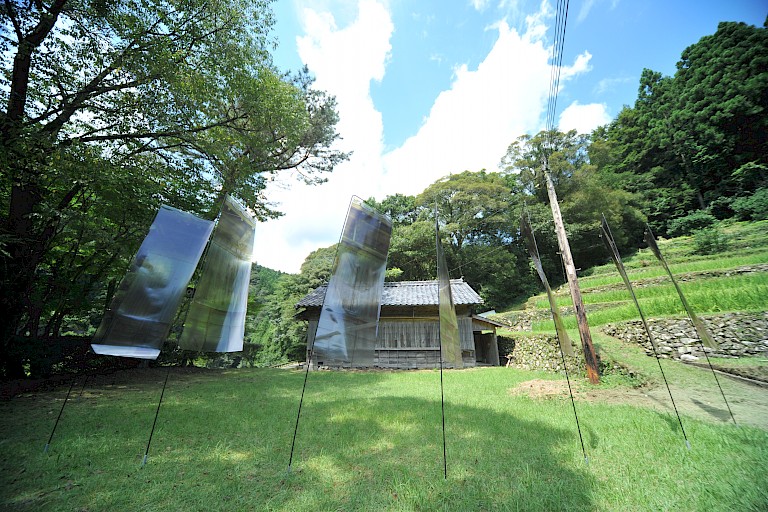



Mori Butai consisted of several events, including a photography competition and exhibition, kinetic sculpture workshops with school children, and public art installations within several sacred shrine-stage complexes in Tokushima Prefecture on the island of Shikoku. Given its emphasis on nature, it should come as no surprise that the project explored ecological themes. The school workshops, for example, taught children how to make electricity-generating wind wheels by recycling PET bottles. Similarly, the public art installations focused on sustainability issues. Situated in shrines in the Haigyu area and along the Momiji River, these sculptures incorporated local materials such as paper, flower petals and on-site audio recordings. Many effectively revitalized disused stages, exploiting their dilapidated condition to evoke feelings as well as a sense of the passage of historical time.
Significantly, the project engaged the elderly as well as the young, directly inviting residents of the area, the majority over the age of 70, to join conversations with the participating artists, Ritsuko Taho, Izumi Hosaka, Koji Nakamura, Yuki Shibata, Ryo Yamada, Hidenori Sonobe, Kanako Hayashi, Nao Nishihara, Kosuke Ikeda,Yusaku Mochizuki and Ayaka Kaneto. Mori Butai is an outstanding placemaking initiative, which catered to diverse audiences in neglected/marginalized locales (Naka Town’s population is barely over 10,000) through the staging of artistic experiences of nature and history. Its environmental message is highly relevant given the reality of global warming and the lasting impact of ecological disasters such as Fukushima. Since 2012, the project has been re-staged and expanded, with considerable success.
All copyright belongs to Shanghai Academy of Fine Arts, Shanghai University.



